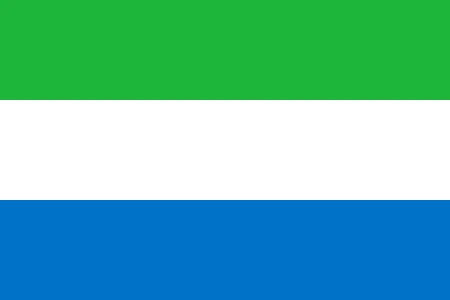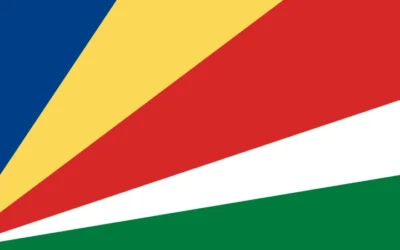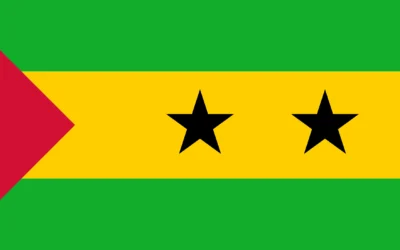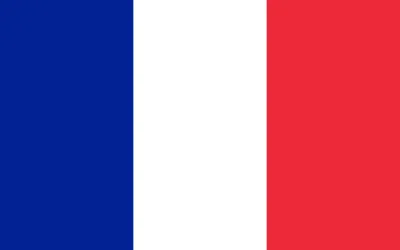Sierra Leone Travel Guide
Discover Why You Should Visit Sierra Leone
Why Visit Sierra Leone?
Sierra Leone is a hidden gem on West Africa’s Atlantic coast, offering stunning beaches, lush forests, vibrant culture, and historical significance. After years of recovery, it’s now emerging as a safe and welcoming destination with unspoiled natural beauty and deeply hospitable communities.
Travelers are drawn to its white-sand beaches, unique wildlife, eco-tourism opportunities, and historical sites related to the transatlantic slave trade and colonial past.
Ideal for: Beach lovers, history enthusiasts, eco-travelers, and cultural explorers.
Must-Know Facts
Capital/Major City: Freetown
Language(s): English (official), Krio (widely spoken), Mende, Temne, and other local languages
Currency: Sierra Leonean Leone (SLL)
Best Time to Visit: November to April (dry season with best beach weather)
Fun Fact: Sierra Leone is home to Tacugama Chimpanzee Sanctuary, which protects and rehabilitates endangered chimpanzees.
Top Things to Do
Relax on Lumley Beach, River Number Two Beach, and Bureh Beach
Visit Bunce Island, a former slave trade site rich in historical significance
Explore Freetown’s Cotton Tree, National Museum, and colonial architecture
Take a guided hike in the Western Area Peninsula National Park
Experience rural village life and cultural heritage in the provinces
Local Culture & Lifestyle
Sierra Leone’s culture blends West African traditions with British colonial influence. Music, dance, storytelling, and oral history are vibrant and passed down through generations.
Krio is more than a language; it’s a cultural identity that reflects the country’s unique Creole heritage.
Religious and ethnic diversity is respected, with strong community ties across different groups.
Food & Drink Highlights
Street Food: Fry fry (fried plantains and fish), cassava bread, grilled chicken with spicy sauce
Restaurants: Crown Bakery, Mamba Point Lagoonda, and local cookeries around Freetown
Drinks: Ginger beer, palm wine, local beers, fresh fruit smoothies
Desserts: Coconut cake, banana fritters, sweet cassava pudding
Main Dish & Culinary Symbols
Signature Dish: Groundnut stew (peanut-based sauce with meat or fish, served with rice)
Common Ingredients: Rice, cassava leaves, peanuts, palm oil, chili peppers, fish, okra
Culinary Culture: Meals are hearty and often spicy, prepared in large pots and shared among families and neighbors
Symbols & Icons of the Area
Natural Icons: Freetown Peninsula, Banana Islands, Gola Rainforest, Tiwai Island
Cultural Icons: Cotton Tree, Krio architecture, Bunce Island, traditional masks and carvings
Hidden Gems & Off-the-Beaten-Path
Tiwai Island Wildlife Sanctuary for rare primates and birdwatching
Banana Islands for snorkeling, kayaking, and historic ruins
Kabala Highlands for scenic views and cool weather trekking
Shopping & Souvenirs
What to Buy: Tie-dye fabrics, hand-carved wooden sculptures, woven baskets, jewelry made from recycled materials
Where to Shop: Big Market in Freetown, Lumley Craft Market, roadside stalls along the coast
Getting Around
Public Transport: Shared taxis and poda-podas (minibuses) are common in cities
Car Rentals: Available with drivers for inter-city and rural travel
Tip: Roads can be rough in rural areas, and travel times may be long
Walkability: Good in beach areas, local neighborhoods, and central Freetown
Travel Tips
English is widely spoken, but learning a few Krio phrases is appreciated
Respect cultural customs, especially in religious or rural settings
Use mosquito repellent and stay up to date with health precautions
Bring cash in small denominations, as card payments are limited outside hotels
Where to Stay
Budget: Guesthouses in Bo, Kenema, and along the coast
Mid-range: New Brookfields Hotel, Bintumani Hotel, beach lodges in Tokeh and Bureh
Luxury: The Place Resort at Tokeh Beach, Radisson Blu Mammy Yoko Hotel
Unique: Eco-lodges, beachfront bungalows, and island homestays
Sample 4-Day Itinerary
Day 1: Arrive in Freetown, explore the Cotton Tree and National Museum, enjoy Lumley Beach
Day 2: Take a boat to Banana Islands for snorkeling and historic ruins
Day 3: Visit Bunce Island and relax at River Number Two Beach
Day 4: Explore Tacugama Chimpanzee Sanctuary or hike in the nearby rainforest






0 Comments